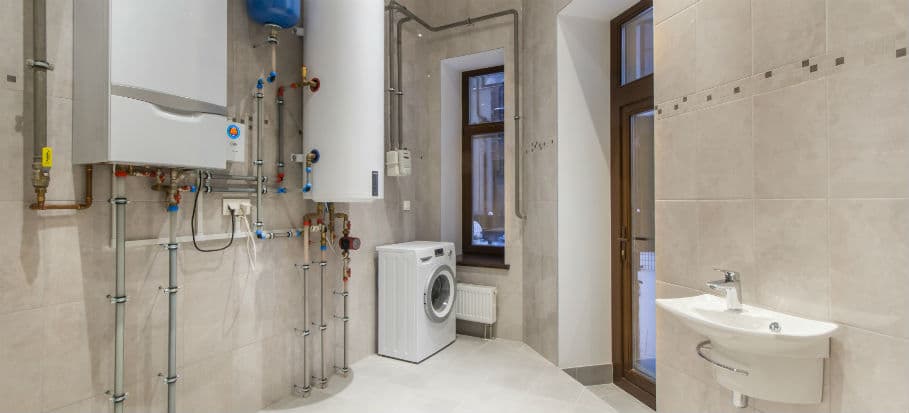
With winter on the doorstep, you might be thinking about switching on the home heating system. However, British weather has been known to cause trouble for all your home appliances, especially those that tend to freeze when temperatures fall below zero. As a homeowner, you need to take the right precautions to prevent your pipes from freezing.
- What is a condensate pipe?
- What does a condensate pipe look like?
- Where is the condensate pipe on a boiler?
- Why the condensate pipe matters?
This article is for all of you who:
- Own a heating system;
- Own a condensing boiler;
- Wish to prevent pipe freezing.
What is a condensate pipe?
The condensate pipe is used to discharge wastewater into the sewer. It’s a part of the mechanism of a condensing boiler. Gas boilers don’t have a condensate pipe.
As the boiler is turned on, water vapour is channelled through it until it condenses back. The condensate (the water produced from the condensation process), is collected and channelled in the condensate trap. This is done in order to prevent toxic fumes from expelling into the sewer, similar to how the water in the U-bend of a sink stops bad smells from getting into your home.
What does a condensate pipe look like?
A condensate pipe is easily identifiable as the only plastic pipe in a condensing boiler. You can’t use copper or steel for a condensate pipe because the condensate is slightly acidic and can corrode them. The pipe should be at least 22 mm in diameter. You should notice the trap on the pipe.
Condensate pipes are most effective with no bends at all, or with as few bends as possible in order to avoid any condensate being trapped (though sometimes it’s unavoidable). So, you should be looking for a straight pipe.
Need a professional to inspect your boiler and heating system?
Fantastic Services is here for you!
- We’re certified:

Where is the condensate pipe on a boiler?
You should find it if you look underneath your condensate boiler. There should be a few pipes going out and the only plastic one is your condensate pipe. You should be able to follow the pipe as it leaves your home. Condensate pipes often run outside or through unheated rooms of your building, for example, a garage. If you see a long vertical pipe on the outer wall connecting to the ground, chances are it’s the condensate pipe.
Why the condensate pipe matters?
It’s important to know how to recognise your condensate pipe because of the most common problem they have – freezing. If the water inside the pipe freezes, it creates a blockage that prevents the effective work of the boiler. On a condensate boiler, this will trigger a fault code and you won’t see it light any more.
The fastest remedy for a frozen condensate pipe is pouring hot water on the outside until the ice chunk inside melts. The best cure, however (and this goes for any pipe) is insulation.
Knowing how to defrost the condensate pipe is one thing, but sometimes it may get blocked with sewage. This usually happens because of a poor connection location to the wastewater system. In some cases, the sewage may travel up the condensate pipe and damage the boiler internally. To fix this, you need to find a certified professional. Do not attempt to clean up a clogged trap by yourself!
Hire a professional
If you found out that your condensate pipe is frozen, you need professional help. If you’re wondering how to insulate the condensate pipe, before the water inside it has frozen, then consider calling a specialist. Fantastic Services does not recommend doing any work on your boiler if you’re not a certified technician, as you might inflict further damage and lose your boiler warranty. Also, to help you keep your boiler in good condition, we have boiler cover options available that include boiler service as part of the package.

Visit the main website for price rates on our boiler service professionals!
Takeaways
- The condensate pipe is the only plastic pipe in your condensate boiler;
- The condensate pipe can be found going through unheated rooms, such as the garage, or be on the outside of the building;
- The condensate pipe should be insulated to prevent freezing.
***
Do you know where to find the condensate pipe on your boiler? In what condition did you find it? Tell us in the comments!
Image source: Alhim/shutterstock.com